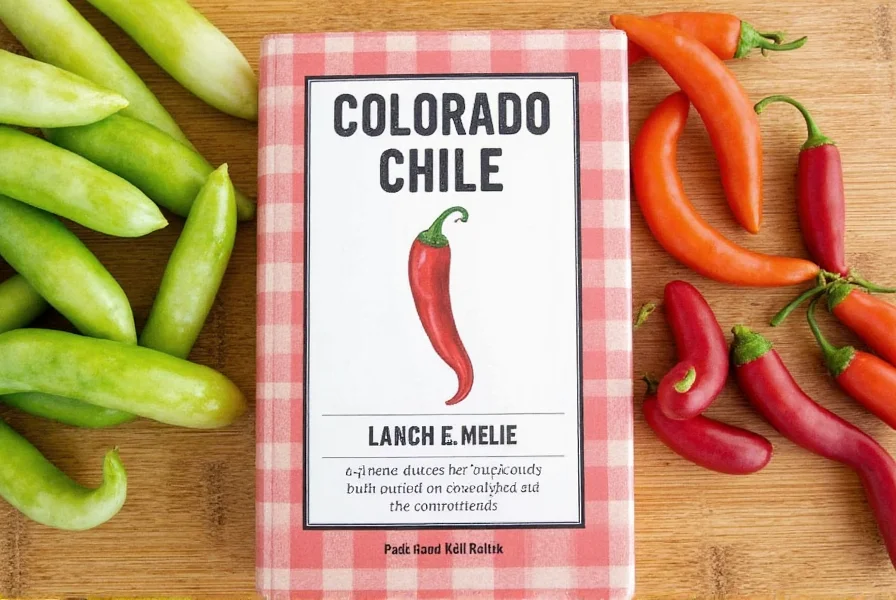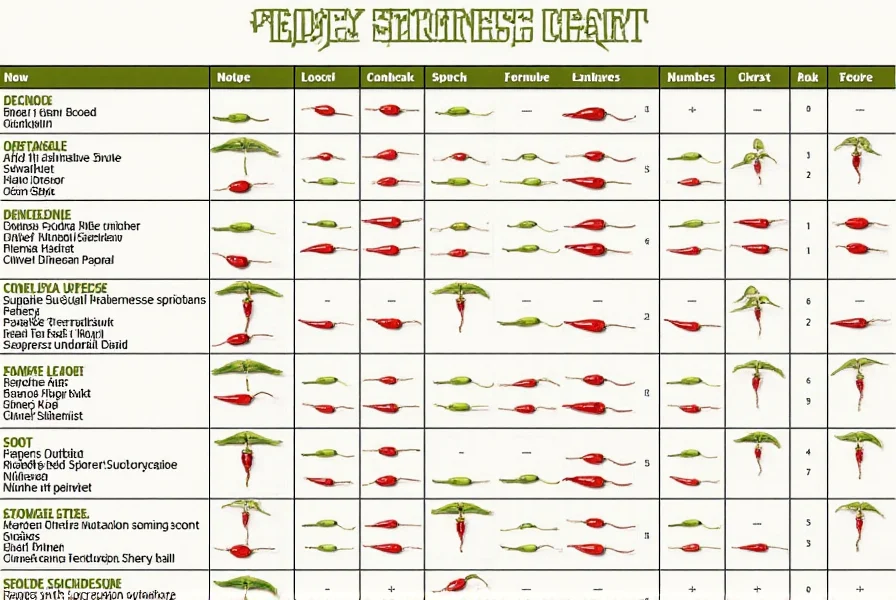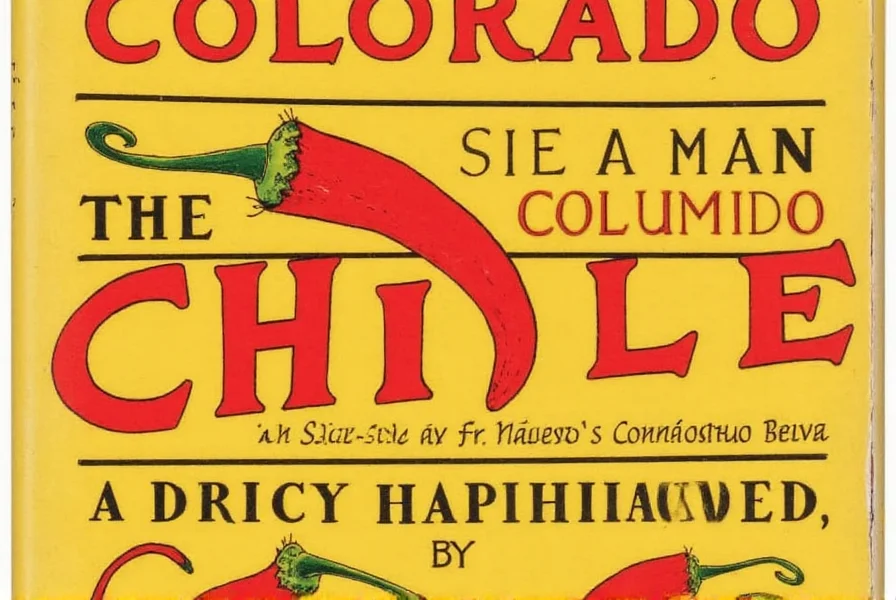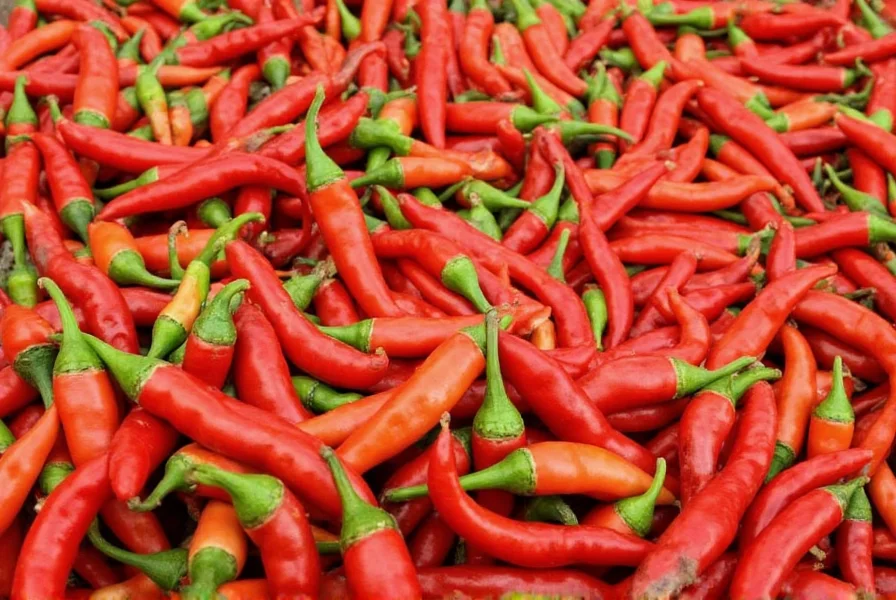Understanding New Mexico Chile: Clarifying the Colorado Chile Misconception
Many people search for "Colorado chile," but this term is actually a common misconception. The correct term for this popular pepper is New Mexico chile or Hatch chile. While these peppers are grown in Colorado as well as New Mexico, they are not a distinct variety called "Colorado chile." Instead, they are varieties of New Mexico chile peppers that are cultivated in Colorado. In this guide, we'll clarify this common confusion and provide accurate information about New Mexico chile peppers.

Whether you're a home cook or a professional chef, understanding the true nature of these peppers will help you make the most of their unique flavor and heat profile.
Spice Basics: What You Need to Know About New Mexico Chile
New Mexico chile peppers are a staple in Southwestern cuisine, known for their rich, smoky flavor and moderate heat. Understanding their heat levels, flavor profiles, and how they interact with other ingredients can make all the difference in your cooking.
The Scoville scale is a common way to measure the heat level of peppers. New Mexico chile peppers typically range from 1,000 to 8,000 Scoville Heat Units (SHU), placing them in the mild to medium heat category. For comparison, this is hotter than bell peppers (0 SHU) and poblano peppers (1,000-2,000 SHU), but milder than jalapeños (2,500-8,000 SHU) and cayenne peppers (30,000-50,000 SHU).

It's important to note that the heat of a chile can vary depending on factors like ripeness, growing conditions, and preparation method. For example, roasted or dried chiles tend to be more intense than fresh ones.
Types of New Mexico Chile
New Mexico chile comes in several varieties, each with its own unique characteristics. Here are the most common types:
- Green New Mexico Chile: Harvested before full ripeness, this variety has a vibrant green color and fresh, grassy flavor. It's commonly used in stews, salsas, and sauces.
- Red New Mexico Chile: Allowed to ripen fully and then dried, this version has a deeper, earthier taste with smoky notes. It's ideal for making chili, adobo sauces, and traditional New Mexican dishes.
- Hatch Chile: A specific cultivar of New Mexico chile grown in the Hatch Valley of New Mexico, known for its balanced heat and rich flavor profile. Hatch chiles are often roasted and used in a wide variety of dishes.

Choosing the right type of chile depends on your recipe and personal preference. Green chiles are great for adding color and fresh flavor, while red chiles offer a more complex, smoky profile.
Practical Tips for Using New Mexico Chile
Whether you're a seasoned chef or just starting out, here are some practical tips to help you make the most of your New Mexico chile:
- Roast Before Using: Roasting chiles enhances their flavor and reduces moisture, making them more intense. Simply place them on a baking sheet and roast until blistered, then steam in a covered bowl before peeling.
- Use Gloves When Handling: New Mexico chile can be quite spicy, so always wear gloves when cutting or handling them to avoid irritation.
- Balance Heat with Acid or Fat: If your dish is too spicy, add a splash of lime juice or a bit of dairy (like sour cream or yogurt) to balance the heat.
- Store Properly: Fresh chiles can be stored in the refrigerator for up to two weeks, while dried chiles should be kept in an airtight container in a cool, dark place for up to 12 months.
- Experiment with Recipes: Don't be afraid to try new combinations. New Mexico chile pairs well with meats, beans, vegetables, and even desserts like chocolate-based treats.

These tips will help you unlock the full potential of New Mexico chile and elevate your cooking game.
Buying Guide: How to Choose the Best New Mexico Chile
Whether you prefer fresh, dried, or powdered chile, here's a guide to help you choose the best one for your needs:
| Type | Best For | Seasonal Availability | Storage Tips |
|---|---|---|---|
| Green Chile (Fresh) | Salsas, stews, green chile sauce | August-September | Refrigerate in paper bag for up to 2 weeks |
| Red Chile (Dried) | Chili con carne, adobo sauces, mole | Year-round | Airtight container in cool, dark place for 6-12 months |
| Chile Powder | Rubs, seasoning blends, soups | Year-round | Refrigerate for up to 6 months |
When shopping for New Mexico chile, look for peppers with a vibrant color and firm texture. For dried chiles, check for a strong aroma and avoid any that appear dusty or discolored. For the best quality, purchase from reputable suppliers who source directly from New Mexico farms.
Culinary Uses and Flavor Pairings
New Mexico chile is incredibly versatile and can be used in a wide variety of dishes. Its smoky, slightly sweet flavor pairs well with both traditional and modern ingredients. Here are some popular ways to use it:
- Green Chile Stew: A classic Southwestern dish made with potatoes, beans, and tender meat. The green chile adds depth and a touch of heat.
- Chili Con Carne: Dried red chile is often used in this hearty stew, giving it a rich, smoky base.
- Salsa: Fresh or roasted green chile can be blended into a creamy salsa for tacos, nachos, or as a dip.
- Adobo Sauce: A tangy, spicy sauce made from dried chile, garlic, vinegar, and herbs. Perfect for marinating meats or adding flavor to dishes.
- Grilled Meats: A simple chile rub can enhance the flavor of chicken, pork, or beef, giving it a smoky, spicy finish.
One sentence that captures the essence of New Mexico chile is: New Mexico chile is a culinary treasure that brings warmth, flavor, and tradition to every dish it touches.
Frequently Asked Questions About New Mexico Chile
What is the difference between New Mexico chile and Hatch chile?
Hatch chile is a specific variety of New Mexico chile grown in the Hatch Valley of New Mexico. While all Hatch chiles are New Mexico chiles, not all New Mexico chiles are Hatch chiles. Hatch chiles are known for their balanced heat and rich flavor profile, and they're typically harvested in August and September during the famous Hatch chile season.
How hot is New Mexico chile on the Scoville scale?
New Mexico chile typically ranges from 1,000 to 8,000 Scoville Heat Units, placing it in the mild to medium heat category. For comparison, this is hotter than poblano peppers (1,000-2,000 SHU) but milder than jalapeños (2,500-8,000 SHU) and cayenne peppers (30,000-50,000 SHU). The heat can vary based on growing conditions, ripeness, and preparation method.
Can I substitute New Mexico chile with other types of chile?
Yes, you can substitute New Mexico chile with Anaheim peppers for a milder flavor or jalapeños for more heat. For green chile recipes, Hatch chiles make an excellent substitute with comparable flavor profiles. When substituting dried red New Mexico chile, ancho or guajillo peppers work well in most recipes.
How should I store New Mexico chile to keep it fresh?
Fresh green New Mexico chiles can be stored in the refrigerator in a paper bag for up to two weeks. For longer storage, roast and freeze them in airtight containers for up to six months. Dried red chiles should be kept in airtight containers in a cool, dark place where they'll maintain their flavor for 6-12 months. Chile powder should be stored similarly but typically has a shorter shelf life of 6 months.
What are the health benefits of New Mexico chile?
New Mexico chile contains capsaicin, which has been linked to various health benefits including pain relief, improved metabolism, and reduced inflammation. Like other chile peppers, it's rich in vitamin C, vitamin A, and antioxidants. The heat from chiles can also help boost circulation and may aid in digestion when consumed in moderation.
What dishes pair best with New Mexico chile?
New Mexico chile shines in traditional Southwestern dishes like green chile stew, chile verde, and red chile sauce. It pairs exceptionally well with roasted meats, beans, potatoes, and cheese. Green chile works beautifully in salsas, while dried red chile is perfect for chili con carne, adobo sauces, and mole. It also complements chocolate surprisingly well in certain dessert recipes.
Conclusion
New Mexico chile is more than just a spice—it's a flavor experience. Whether you're using it in a classic recipe or experimenting with new dishes, its versatility and depth of flavor make it a must-have in any kitchen. From the smoky richness of dried chiles to the bright, fresh taste of green chiles, there's a variety for every palate and purpose.

By understanding the different types, learning how to use them effectively, and choosing the right products, you can unlock the full potential of New Mexico chile. So next time you're shopping for spices, don't forget to pick up a few chiles—they might just become your new favorite ingredient.










 浙公网安备
33010002000092号
浙公网安备
33010002000092号 浙B2-20120091-4
浙B2-20120091-4